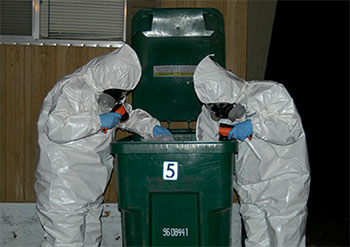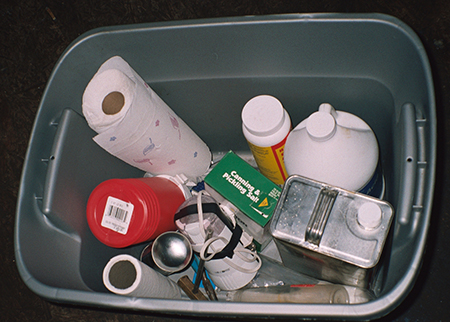
Homemade “kitchen” meth labs can look so ordinary that they may escape detection by the untrained eye. Discarded containers that have been used to make meth using the One-Pot method are dangerously contaminated but may look harmless. You can help make your community safer by learning the signs of a meth lab.
If you think you have spotted a meth lab or the remnants of meth production, call 911. Do not examine or investigate it yourself.
Cold Medicine
A large quantity of cold medication packages or containers is a strong indication of methamphetamine production. Pseudoephedrine, found in cold medicines, is the key ingredient for homemade meth.
Organized Pseudoephedrine Purchases
Meth cooks and addicts try to bypass pseudoephedrine purchase limits by purchasing small amounts at multiple pharmacies, sometimes working in groups. Driving from pharmacy to pharmacy to purchase pseudoephedrine is known as "smurfing." Law enforcement officers are now using sophisticated computer databases to identify "smurfs" and stop their meth production.
Chemical Smells
A telltale sign of a meth lab is a powerful chemical smell. The odor of an active meth lab can be like:
- Paint thinner or varnish smell
- Fuel smell
- Ether or a "hospital smell"
- Sour or vinegary smell
- Ammonia-like smell (like the smell of window cleaner, fertilizers or even cat urine)
Equipment
 Meth labs are usually equipped with items such as:
Meth labs are usually equipped with items such as:
- Pyrex, glass or Corning containers, mason jars or other kitchen glassware (These may be fitted with hoses, clamps, or duct tape.)
- Plastic soda, water or sports drink bottles (This may be the only evidence of meth labs that use the one pot or shake and bake method.)
- Rubber and plastic tubing
- Dust or respiratory masks and filters
- Funnels
- Rubber gloves
- Large plastic storage containers or tubs
- Containers of multi-layered liquids
- Coffee filters or other items including colanders and metal strainers
- White powdery residue
- Sheets or other coverings on windows
- Gas cylinders or tanks that may contain anhydrous ammonia (especially if the gas cylinder has a blue discoloration on the valve -- a chemical reaction causes the brass valve to turn blue when used to store the gas.)